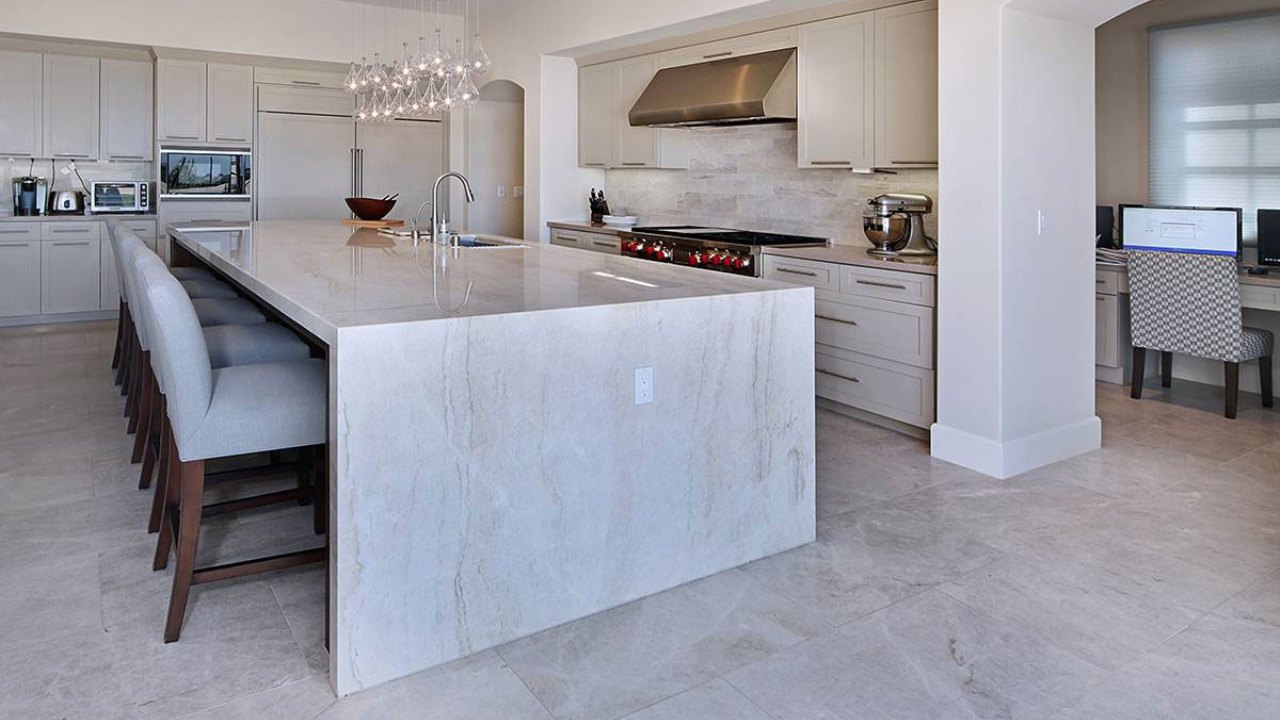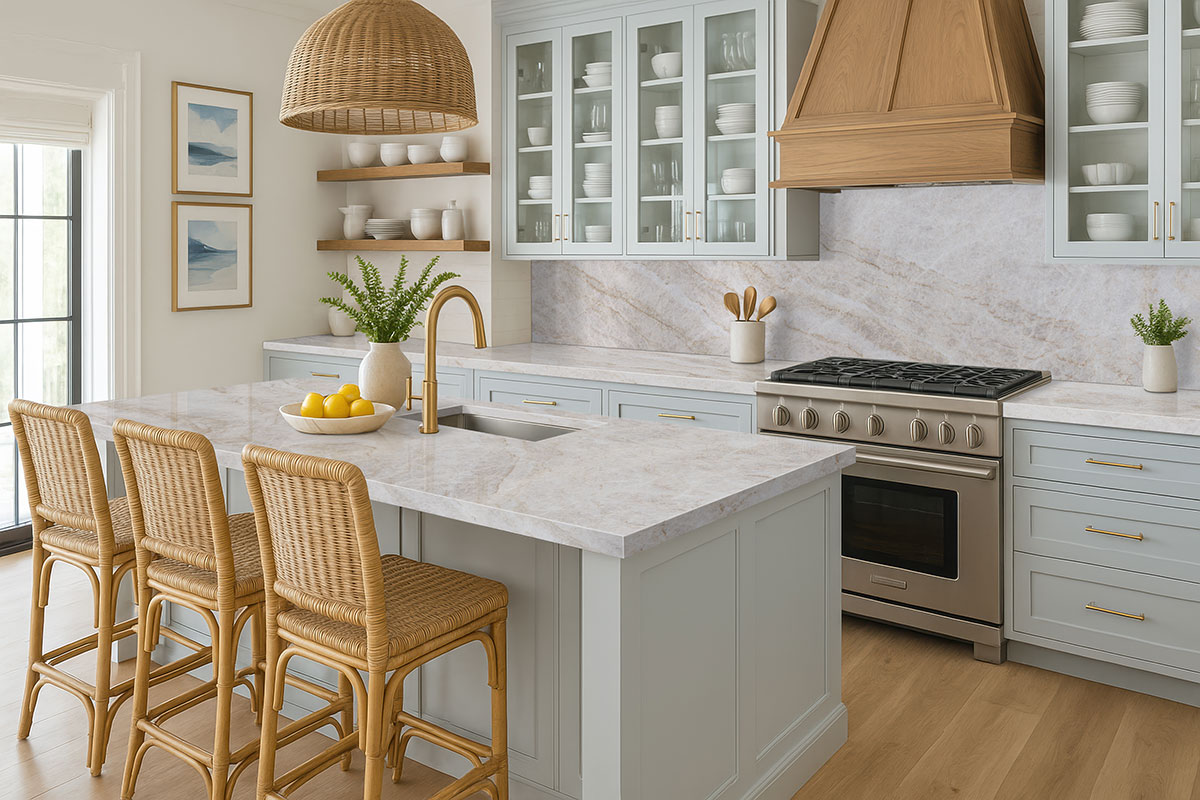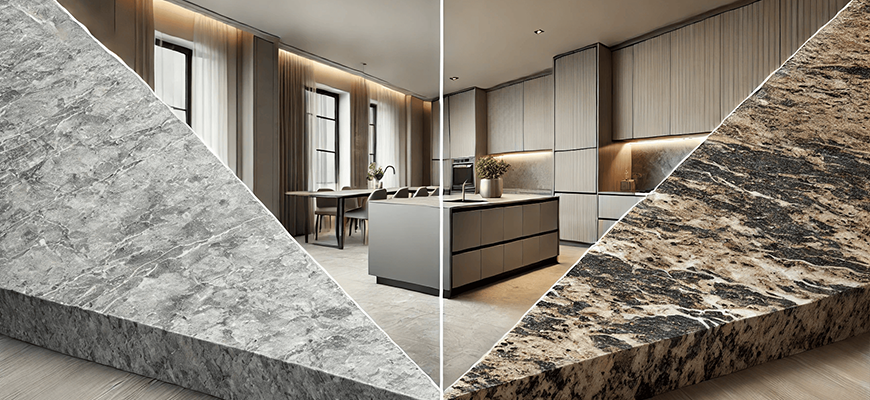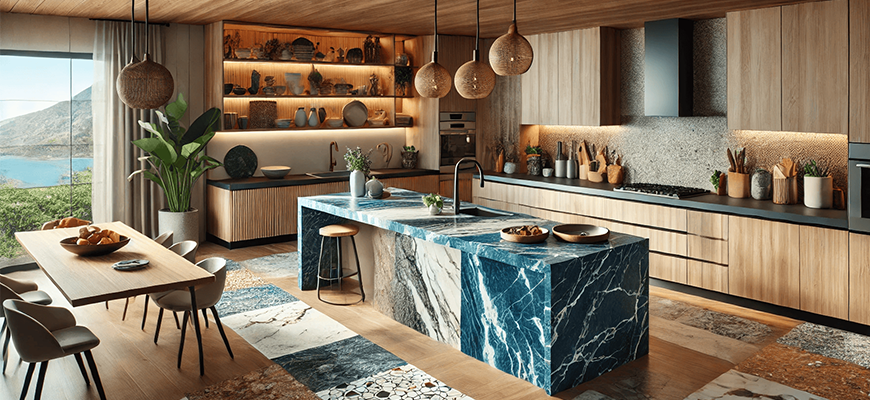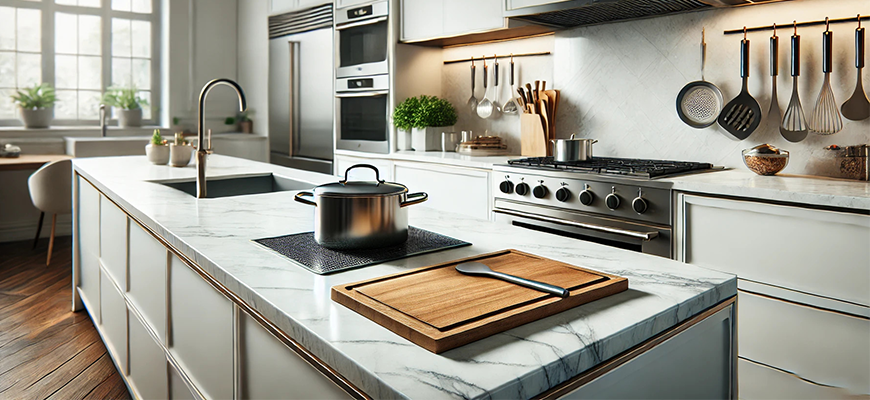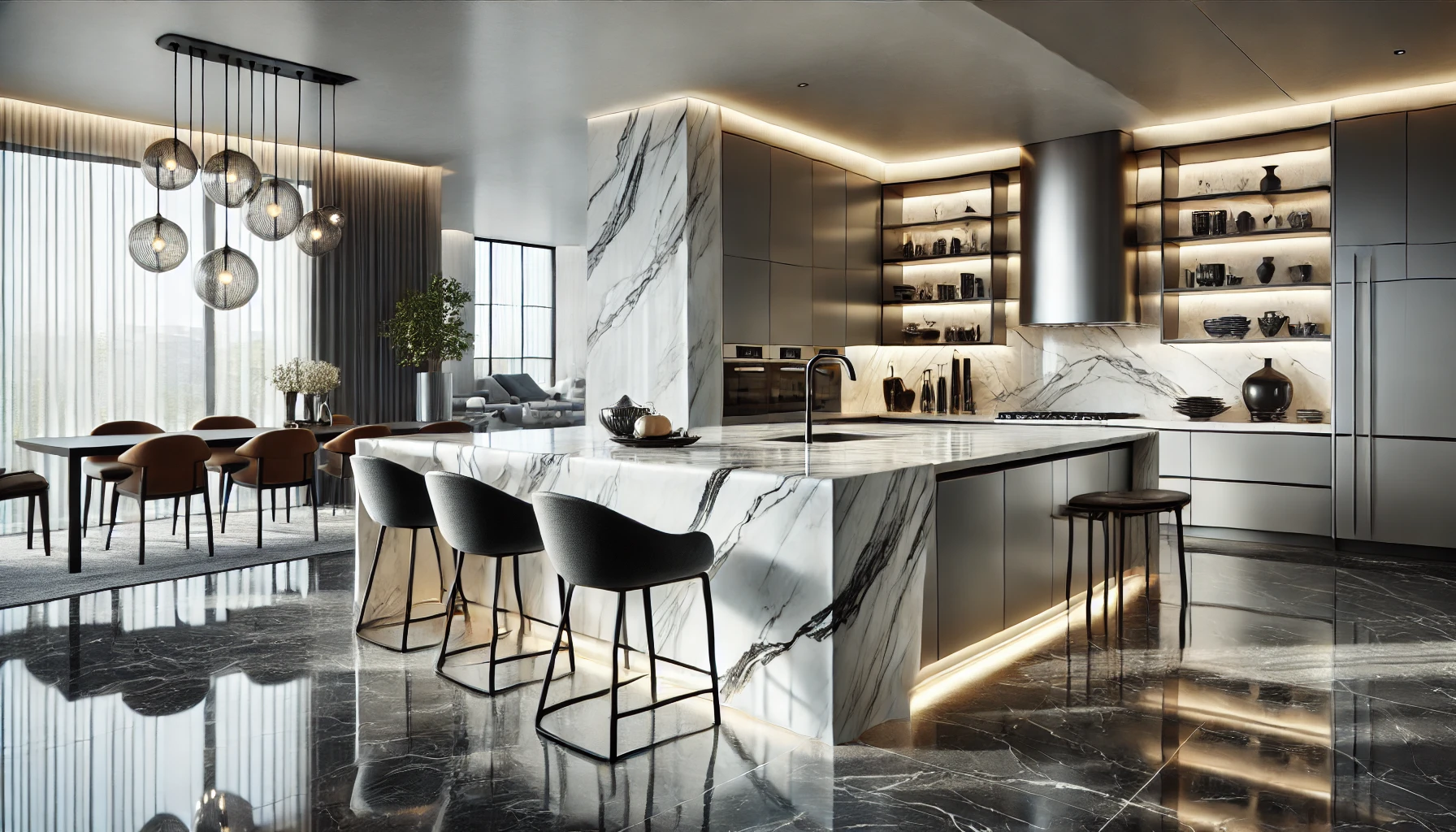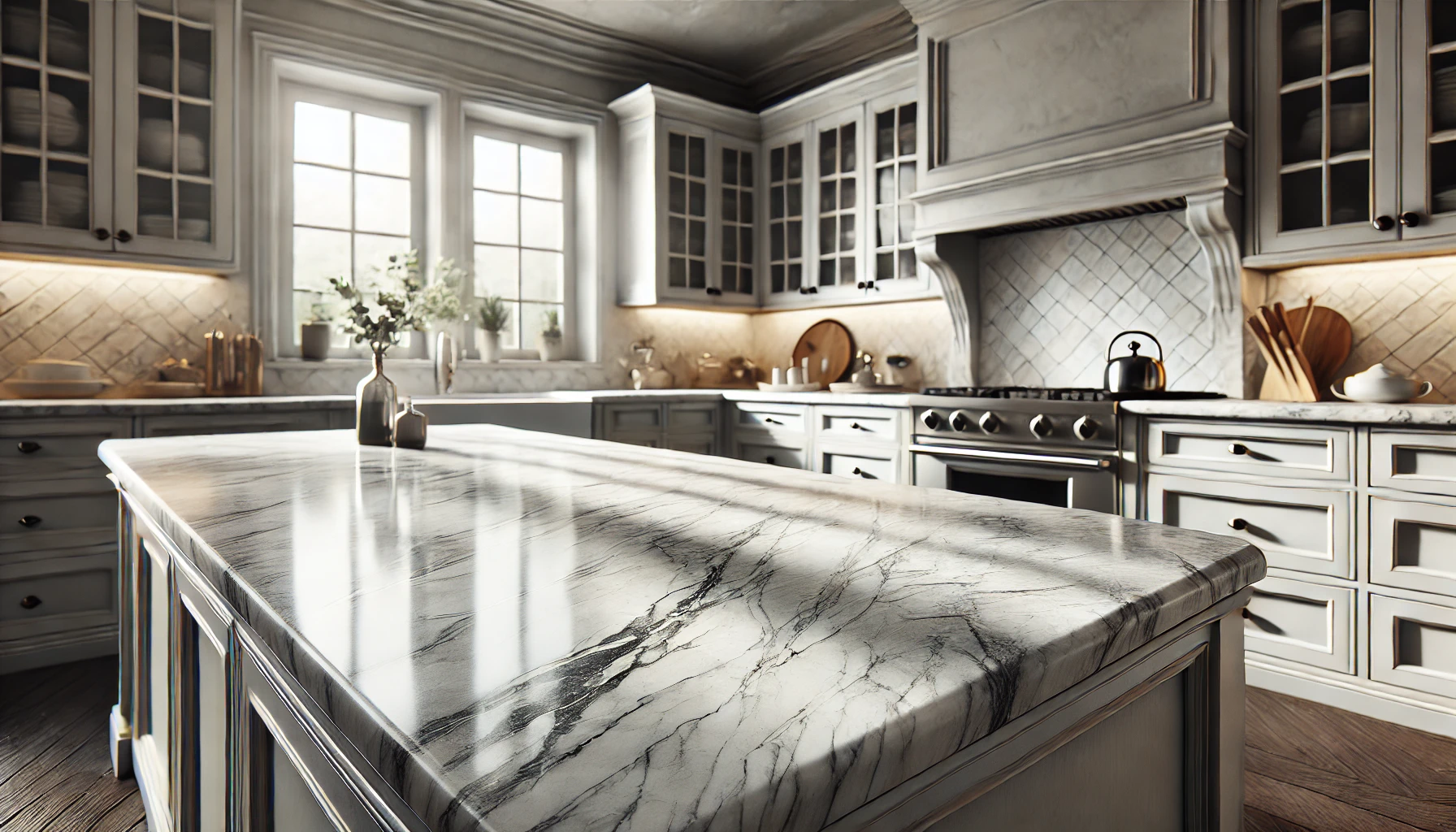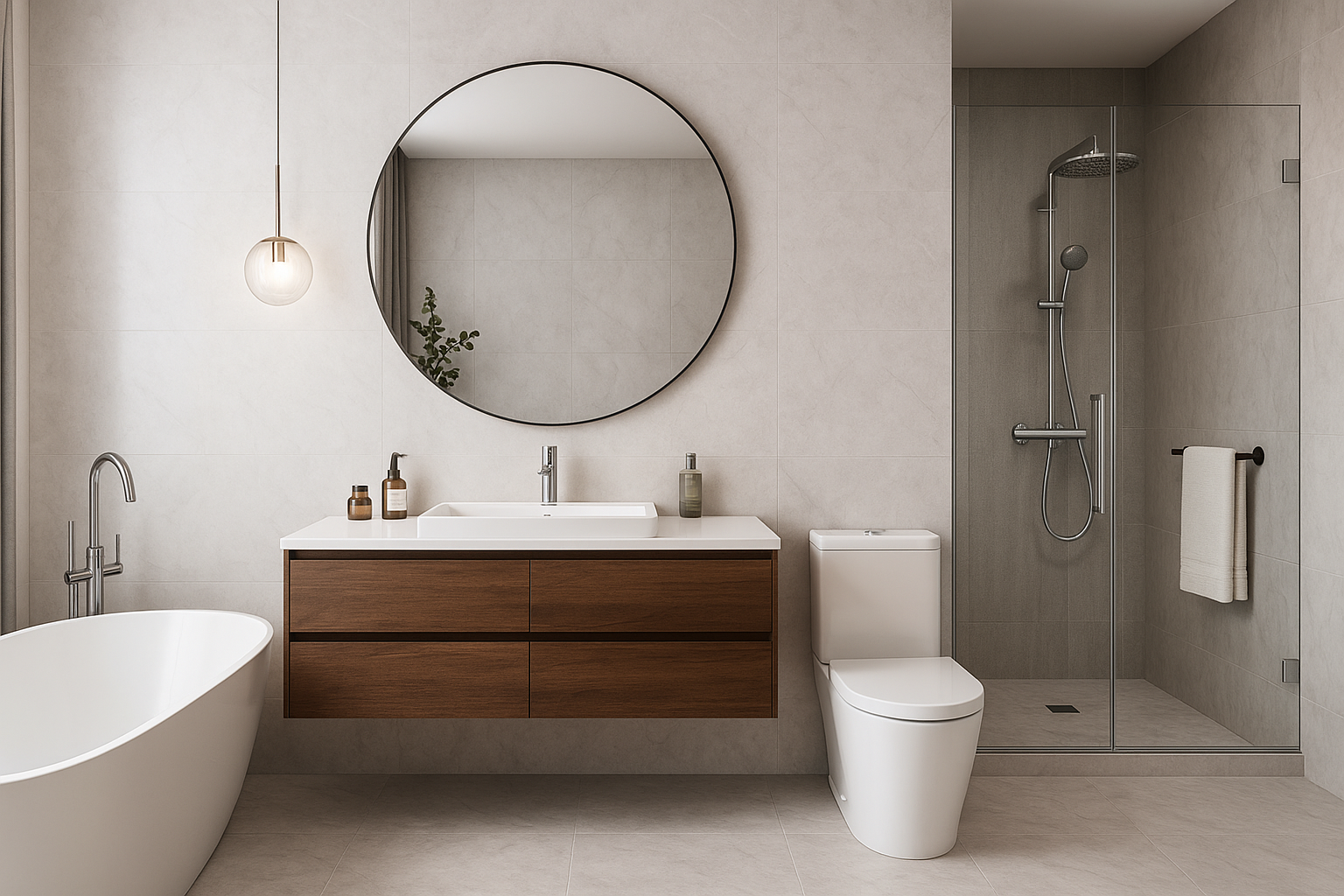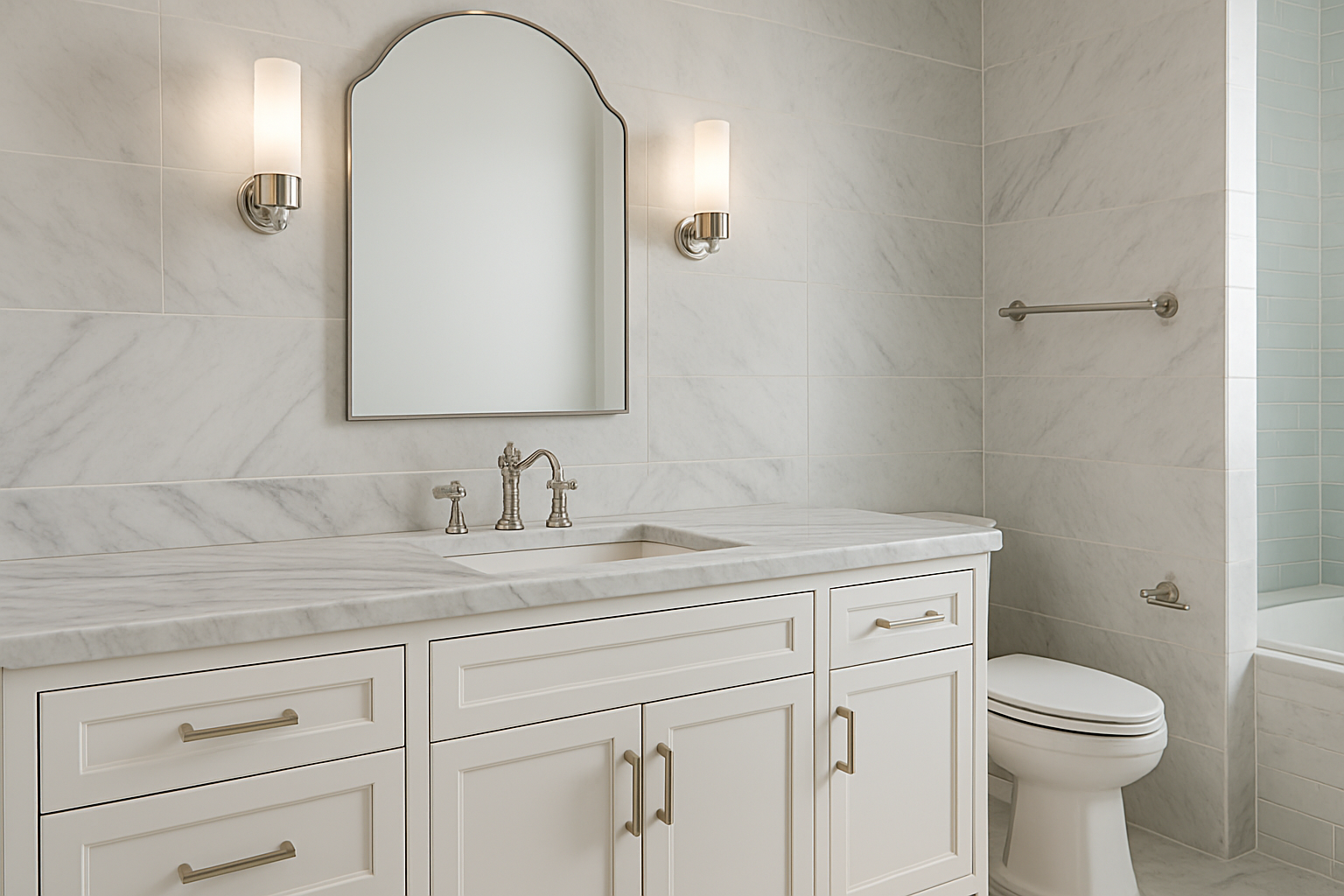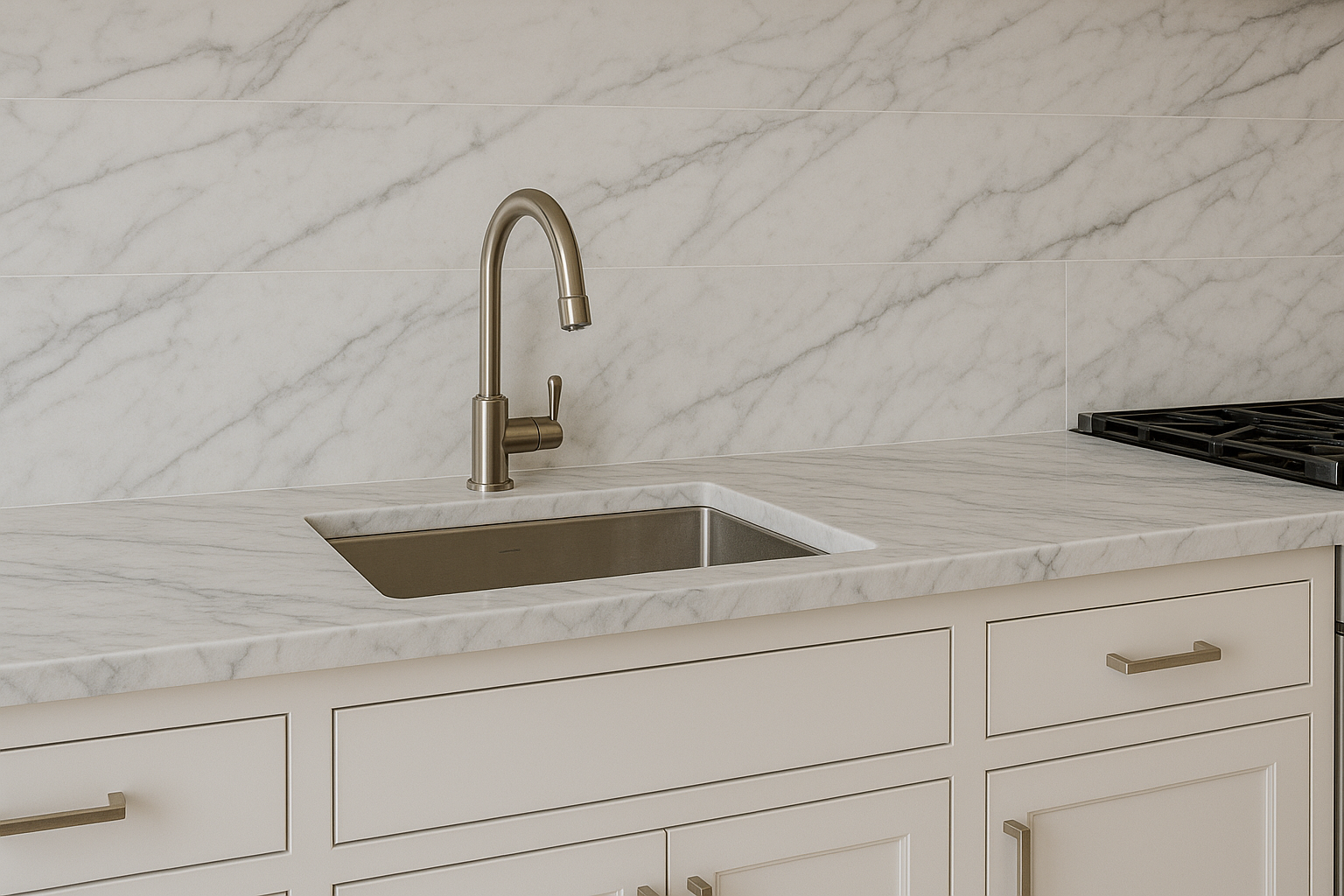Quartzite is a popular choice for countertops, flooring, or wall cladding due to its strength, Mohs hardness rating, and timeless appearance. Many homeowners and project managers believe that quartzite is fully stainproof. Unlike quartz, which is harder than granite and resilient than marble, it is a porous material, like most metamorphic stones.
What Makes Quartzite Stain?
Quartzite takes its shape when sandstone goes through heat and pressure. This transforms quartzite into a crystalline, interlocking structure. Even though it is thicker, quartzite stone is still microporous. These pores let liquids like cooking oils, coffee, and fruit juices seep inside. Common causes of quartzite stains are:
- Quartzite slab or stone’s porosity rating, which can be different according to quarry and finish.
- Sealing frequency and quality of impregnating sealers
- Substance type, such as organic or inorganic stains
- Response time to spills
How Does Staining Happen on Quartzite?
Staining occurs when a liquid spills onto the quartzite surface and penetrates the poorly sealed quartzite countertops, tiles, or slabs. Once the moisture makes its way inside the stone pores, pigments, tannins, or oils remain after evaporation.
Areas that are prone to stains include kitchen islands, bathroom vanities, bar tops, and outdoor kitchens. These are the areas where substances like wine, cosmetics, cleaning agents, and turmeric are common. Humidity and heat can increase the absorption speed. This especially happens when quartzite is used in hospitality projects such as restaurants and hotel lobbies.
What Are The Common Types of Stains on Quartzite?
There can be different types of stains on quartzite according to its application, such as:
| Stain Type | Examples and Details |
| Oil-based stains | Olive oil, grease, lotions, and cosmetics leave dark, greasy patches that can darken the quartzite surface. |
| Organic stains | Coffee, tea, red wine, and fruit juices cause yellow, brown, or reddish discoloration, especially on light-colored slabs. |
| Metallic stains | Rust oxidation from cookware, metal containers, or bathroom fixtures produces orange or brown marks. |
| Dye (chemical) stains | Ink, hair dye, or marker ink penetrates deeply into the stone pores, often requiring solvent-based treatment. |
| Etching mistaken as stains | Citrus juice, vinegar, and other acidic substances dull a polished quartzite finish, often confused with staining. |
How to Clean Stains from Quartzite?
Even being a strong natural stone, staining removal requires a tailored approach based on the stain types, from oil-based, organic, metallic, or dye-related. Stone care professionals do not recommend using universal stone cleaners for quartzite stains. Using the wrong approach can cause surface etch, damage, or set the stain deeper, so knowledge and precision matter.
1- Poultice treatment:
A poultice is a paste applied directly over the stained area. It works by pulling the discoloration out of the quartzite pores through absorption. To use the polutice efficiently, you should understand the nature of the stain first. Generally, it is a mixture of baking soda, hydrogen peroxide, or a specialized commercial stone poultice. The paste is left to dry, then wiped along with the stain particles.
2- Oil-based stains:
Substances like olive oil, cooking grease, or cosmetics leave darker patches. A poultice made with baking soda and water is commonly used for oil-based stains. It absorbs oils effectively. If the stain is stubborn, then repeating the process is necessary.
3- Organic stains:
Organic stains like coffee, tea, red wine, and fruit juices left the tannins and pigments on the surface. These can usually be treated with a poultice containing hydrogen peroxide, which breaks down the organic material and lightens the discoloration without damaging the stone.
4- Rust stains:
When cookware, metal containers, or bathroom fixtures sit on quartzite for long periods, they may form rust. This is one of the most difficult stains to remove because it chemically bonds with the stone surface. Specialized rust removers formulated for natural stone are the safest option, as generic rust removers may damage the finish.
5- Dye stains:
Ink, hair dye, or marker ink penetrates deeply, and they can be hard to clean. Using acetone or another stone-safe solvent may help lift these pigments. Before opting for this process, test on a small area first to avoid changing the finish.
10+ Years Experience
Transform Your Kitchen with Premium Stone Countertops
Professional fabrication & installation of marble, granite, and quartz countertops in New Jersey.
- Expert stone selection & consultation
- Precision fabrication & seamless installation
- Premium marble, granite & quartz options
- Licensed, insured & warranty protected
How To Prevent Quartzite Staining
When quartzite is used in busy areas like halls or as kitchen countertops, it will be prone to staining. Though the stain removal process is possible, stain prevention can be a great practice. Here is how you can prevent quartzite stain:
- Properly sealing after installation of quartzite with a high-quality impermeating sealer will protect the surface.
- Immediately remove the spills to prevent absorption on the quartzite countertop.
- Use protective tools instead of directly cutting on the surface, like cutting boards, trivets, and coasters.
- Select stone-safe cleaners to remove the stain with a cloth. Always use pH-neutral cleaners designed for natural stone surfaces.
- Learn about the quartzite stains, especially in commercial settings like restaurants, cafeterias, or commercial kitchens. Educating staff helps avoid costly damage.
FAQs About Quartzite Staining
Let’s answer your questions about Quartzite Stain.
Does quartzite stain easily?
Yes. Though it is more resistant to stains compared to marble or limestone, it can stain if spills like wine or oil are left too long.
How often should quartzite be sealed?
Once a year, generally. However, with the nanotechnology-based sealers, some quartzite countertops need sealing only every 2–3 years.
Can deep stains be removed from quartzite?
Yes, using a poultice method or, for severe cases, professional stone restoration services.
Is quartzite more stain-resistant than granite?
Granite countertops are less porous. Still, both perform well if sealed with a quality impregnating sealer.
What is the difference between etching and staining on quartzite?
Etching results from acidic contact, like lemon juice, and dulls the surface, while staining changes the stone’s color by absorbing pigments.
Visit Our Showroom!
With expert guidance, you can compare textures, colors, and finishes to find the ideal material for your home.
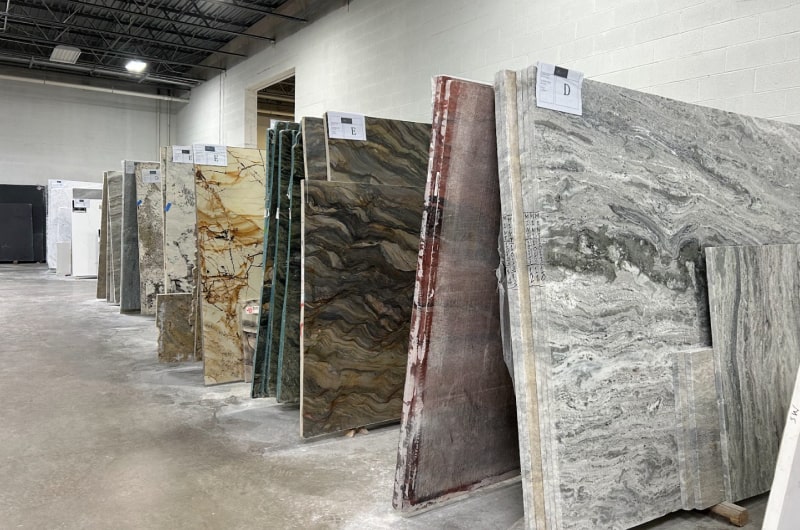
Bottom Line
Quartzite countertops are a strong natural stone countertop that resists stains better than marble but less than granite countertops. Substances like coffee, olive oil, and wine can stain the quartzite if left untreated. It requires regular sealing with impregnating sealers, immediate spill cleanup, and proper stone-safe cleaners to help prevent damage.
Thanks to modern sealant technology and professional services from companies like Royale Marble and Granite, quartzite remains a long-lasting, stain-resistant, and elegant choice for homeowners, businesses, and project managers. You can contact us for more information or to browse the latest stone range and more.

